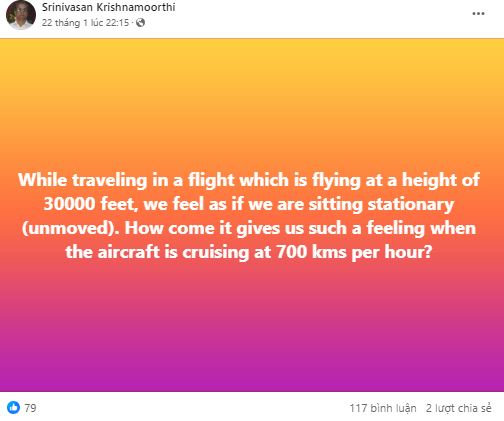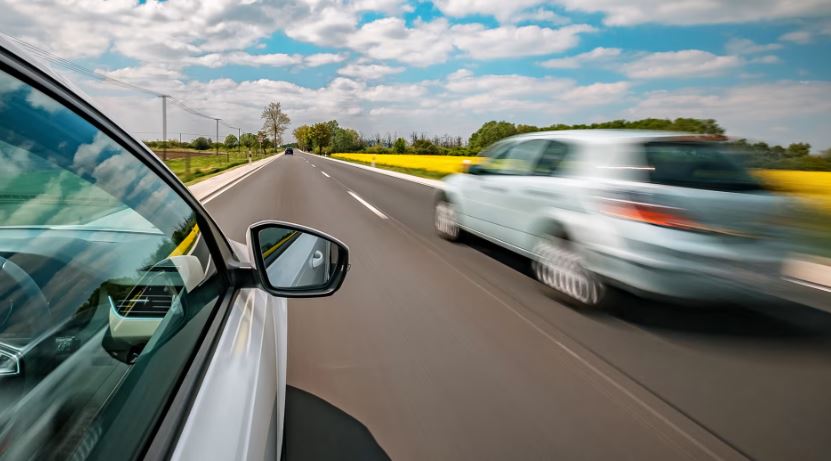
The "Physics is Fun" Facebook group is not just a forum for sharing interesting stories about physics with various theories and science presented by experts in the group.
Recently, a question emerged in the group that baffled many people in search of an answer.
A Facebook user wrote: While traveling in a flight which is flying at a height of 30000 feet, we feel as if we are sitting stationary (unmoved). How come it gives us such a feeling when the aircraft is cruising at 700 kms per hour?

One user explained: Get in your car, or better yet, a high-powered sports car. From a dead stop, accelerate as fast as you can
You are going to feel that acceleration pushing your back and your body against the seat. This is because the mass of your body is resisting acceleration as a law of physics that objects at rest want to stay at rest until acted upon by another force.
The force of acceleration is kinetic energy that must overcome the static energy. Now when you reach 60 MPH and let off the gas you are cruising at the same constant speed and everything equals out. You no longer feel the pressure of acceleration on your back.

If during the rapid acceleration in a sports car, you dropped a ping pong ball from the ceiling, it would not appear to drop straight down to the floor of the car but instead go slightly backwards.
So imagine when you first drop the ball you are going 30 miles an hour and so the ball is going 30 miles an hour too because it's inside the car. But during the time the ball is falling, the car is accelerating let's say to 40 mph, thus it travels more distance and basically drives out from under the ball.
Then just apply this to the airplane, you actually can feel the acceleration during takeoff, but when it is at cruising speed you pretty much don't feel anything because you're flying the same speed.
In terms of feeling vibrations and stuff if you're talking about flying at 700 ft, this is due to several factors. During takeoff, the engines are at full power which causes a lot of vibration, and they continue at high power until they get to 30,000 ft.
In addition, the air actually gets less dense the higher up you go, that's why they have to pressurize the aircraft due to the low amount of oxygen.

So there are literally fewer gases and molecules and things in the air and the air is going thinner, which makes the flight smoother.
Taken to the extreme, if you go into orbit, there's pretty much nothing around and you would feel no vibration as you could cut off the engines entirely and continue flying or orbiting.
When the airplane is descending for landing and again at low altitude, flaps are deployed on the airplane to slow it down, it is maneuvering a lot more to keep a line to the runway, and it is back in the more dense air, so you do feel more things at that point of the flight AS well.
When boating on a river, you see the boat gliding quickly, with trees and objects on the riverbanks passing swiftly. But when sailing on the open sea, all you see ahead is a vast expanse of blue sky and sea, with seagulls looking like tiny white dots hovering in the air.
At that moment, you feel that the ship is moving too slowly, even though its speed is much greater than that on the river. That's the main issue.

When boating, the trees on the riverbanks do not move; it is the boat that moves. If the trees on the riverbanks were rushing past quickly, it would indicate that the boat's speed was high.
But on the open sea, there are no reference points to perceive the speed of the ship. That's why you perceive it as moving slowly, or even standing still at times.
The Earth is like a giant ship in space. If there were milestones along its orbit, like trees on the riverbanks, we would easily notice that the Earth is moving.
Unfortunately, near the Earth, there is nothing as a reference point. Only the distant stars help us perceive the Earth's positional changes over days and months. These stars are too far away, so within a short period of minutes or seconds, it is difficult for us to sense the Earth's movement




